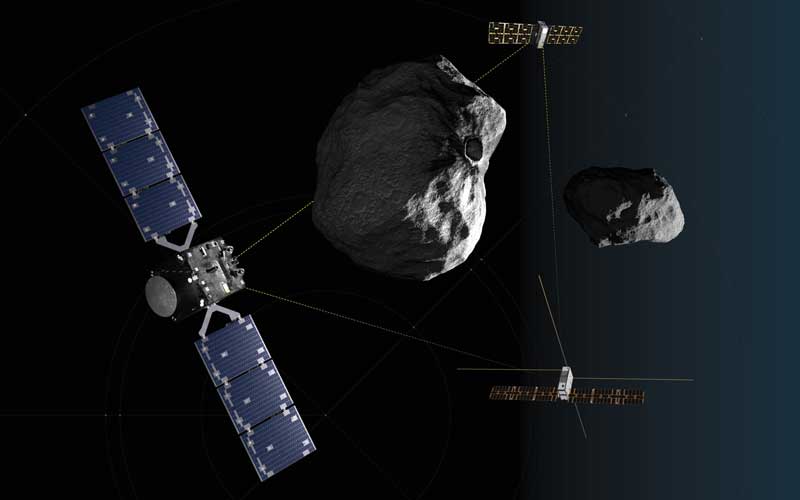
The European Space Agency’s Hera planetary defence probe has begun its two-year journey to a distant asteroid after being successfully launched aboard a SpaceX Falcon 9 rocket.
Hera was developed under ESA’s Space Safety Programme and has been tasked with surveying the results of NASA’s Double Asteroid Redirection Test (Dart) mission. The Dart mission tested the viability of using a kinetic impact event to deflect an asteroid that could pose a threat to life on Earth.
The Falcon 9 rocket carrying the Hera probe was launched on 7 October at 16:52 CEST from Cape Canaveral Space Force Station in Florida. The mission was initially expected to be launched aboard an Ariane 6 rocket. However, in October 2022, ESA announced that delays with the rocket’s introduction had forced the agency to seek alternatives.
The Hera mission is made up of three separate spacecraft. The primary spacecraft measures approximately 1.6 metres wide and features two five-metre long solar wings. Hitching a ride aboard the main spacecraft are two 10-centimetre-wide cubesats: the Milani mineral prospector and the Juventas radar surveyor. The Milani CubeSat will survey the mineral makeup of Dimorphos and its surrounding dust, and the Juventas CubeSat will perform the first subsurface radar probe of an asteroid.
Once the trio arrives at the Didymos asteroid system, the two cubesats will be deployed. The pair will initially be partially deployed to verify their health. They will then be fully deployed at a few centimetres per second to ensure they don’t escape the low gravity of the asteroid system.
The two cubesats will manoeuvre in ultra-low gravity to acquire additional scientific data before eventually landing on the asteroid.
While Hera will pioneer planetary defence verification, it will not be the only mission of its kind. ESA is currently working on its Ramses spacecraft, which will rendezvous with the Apophis asteroid during its close approach to Earth in 2029. Apophis is expected to pass within just 32,000 kilometres of Earth, which is closer than some geostationary satellites.




